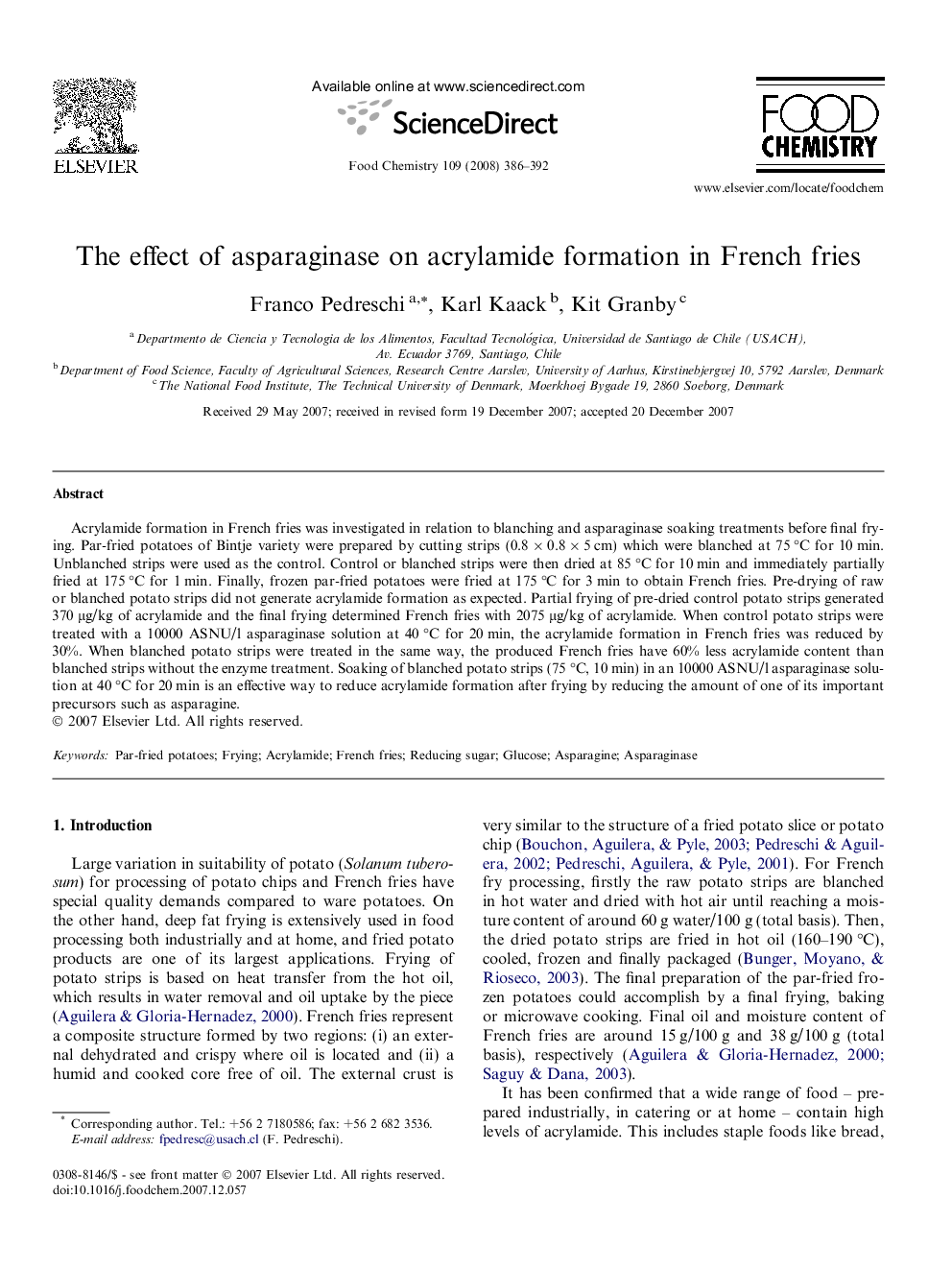| Article ID | Journal | Published Year | Pages | File Type |
|---|---|---|---|---|
| 1188365 | Food Chemistry | 2008 | 7 Pages |
Acrylamide formation in French fries was investigated in relation to blanching and asparaginase soaking treatments before final frying. Par-fried potatoes of Bintje variety were prepared by cutting strips (0.8 × 0.8 × 5 cm) which were blanched at 75 °C for 10 min. Unblanched strips were used as the control. Control or blanched strips were then dried at 85 °C for 10 min and immediately partially fried at 175 °C for 1 min. Finally, frozen par-fried potatoes were fried at 175 °C for 3 min to obtain French fries. Pre-drying of raw or blanched potato strips did not generate acrylamide formation as expected. Partial frying of pre-dried control potato strips generated 370 μg/kg of acrylamide and the final frying determined French fries with 2075 μg/kg of acrylamide. When control potato strips were treated with a 10000 ASNU/l asparaginase solution at 40 °C for 20 min, the acrylamide formation in French fries was reduced by 30%. When blanched potato strips were treated in the same way, the produced French fries have 60% less acrylamide content than blanched strips without the enzyme treatment. Soaking of blanched potato strips (75 °C, 10 min) in an 10000 ASNU/l asparaginase solution at 40 °C for 20 min is an effective way to reduce acrylamide formation after frying by reducing the amount of one of its important precursors such as asparagine.
